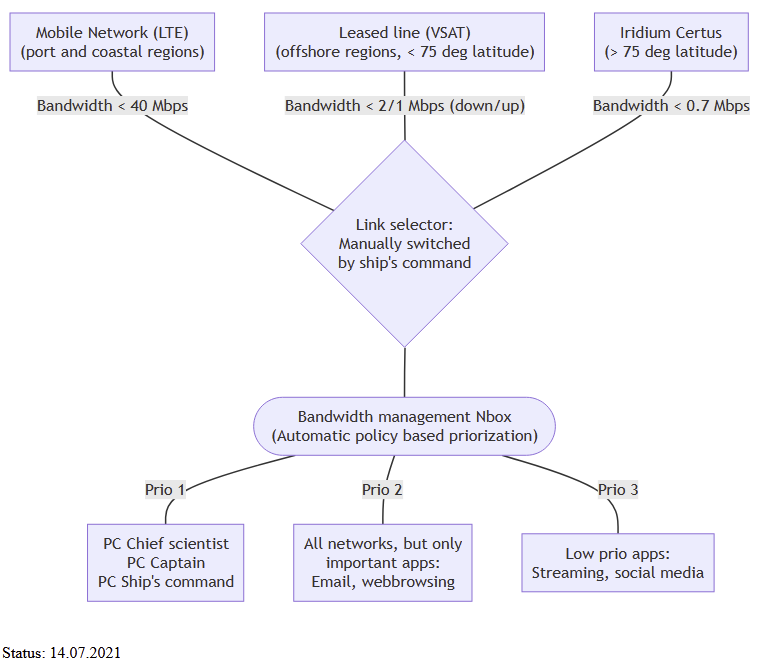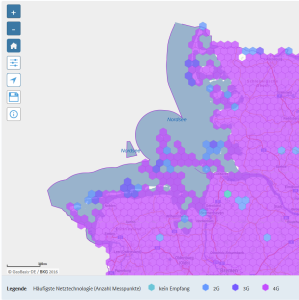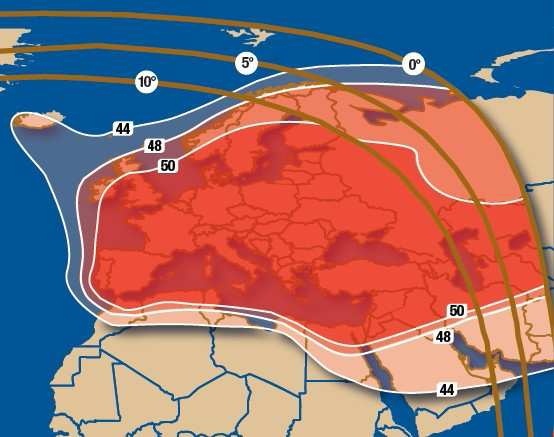Overview
Connection to the internet is available from all Heincke networks. Depending on region, availability and actual throughput the ship's command can select one of several mobile or satellite based internet links.
A bandwidth measurement prioritizes traffic for essential services.
Internet links
Mobile Network
A mobile router and a maritime long-range mobile antenna system (http://www.sputnik24.de) provide LTE network connection in port and close-shore regions.
The maximum throughput is highly dependent on ship's position, course and weather conditions. In case of low connection quality the connection is automatically handed over to 3G (UMTS) or even 2G (GPRS).
Approx. speed:
- 100 Mbps downstream
- 50 Mbps upstream
Mobile network coverage in German Bay (https://breitband-monitor.de/funkloch/karte)
Leased Line (VSAT)
The transmission service is enabled via the geostationary satellite Telstar 12 in KU-band. Its orbit position is 15° west. It operates within the European coverage zone (see figure).
Two antennas are installed to guarantee all time connection with no shadowing by ship's mast. Only one of both antennas is activly transmitting at a time.
The maximum throughput is highly dependent on satellite's elevation (perfect > 10°), ship's position and weather conditions.
Approx. speed:
- 3 Mbps downstream guaranteed (maximum 10 Mbps)
- 1 Mbps upstream guaranteed (maximum 2 Mbps )
Leased Line (VSAT) coverage
Iridium Certus
Iridium internet connection is available after consultation of the ship's command beyond the European coverage zone.
The maximum throughput is 700 kbps while highly dependent on satellite's elevation, ship's position and weather conditions.
Bandwidth management
The throughput of maritime satellite systems is still much lower than what we are used to by land based connections such as LTE or DSL.
Therefore a bandwidth measurement prioritizes traffic for essential services, networks and computers.
The following prioritization classes are defined
- Prio 1: A few very important PCs and telemedicine system
- Prio 2: Science critical applications such as email and web browsing (for research)
- Prio 3: Low prio applications such as streaming, social media, messengers.
- Blocking: Some services such as Android/Apple app upgrades, private VPN and security-related protocols are blocked.
Email and messengers
You may use your existing email accounts using your own mail clients or webmail on your devices or on one of the public PCs.
Messengers are generally allowed however the usage might be limited to text only due to the low bandwidth prioritization.


